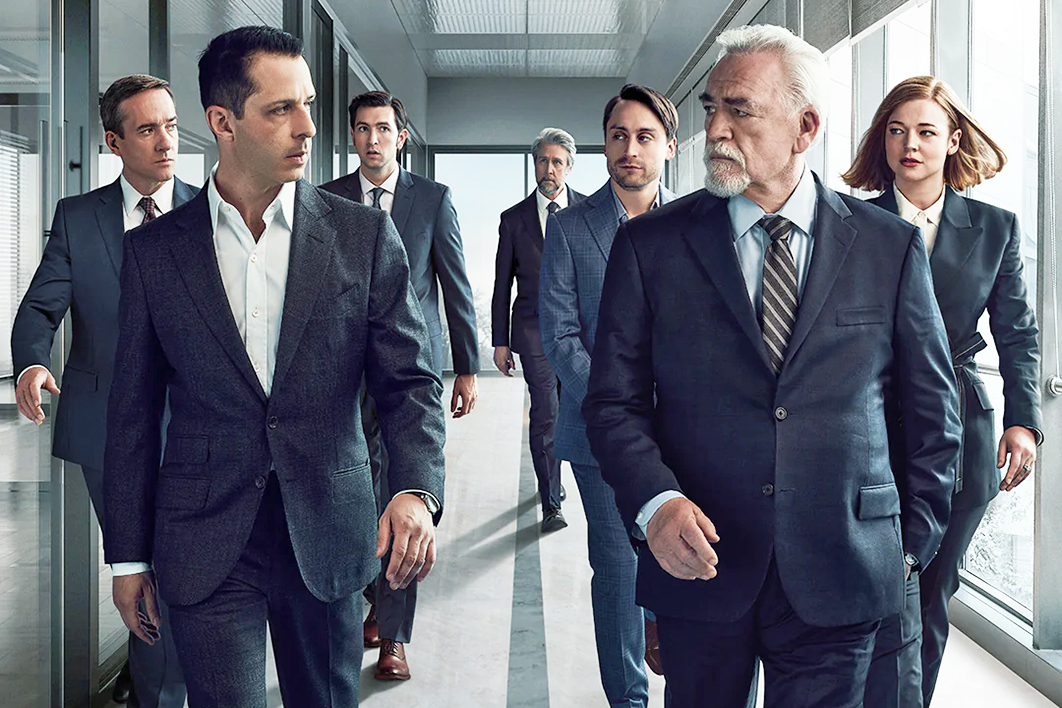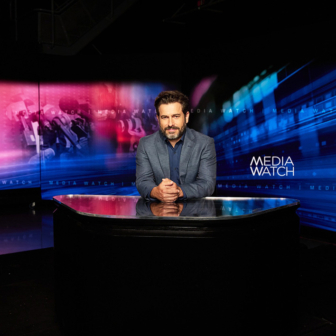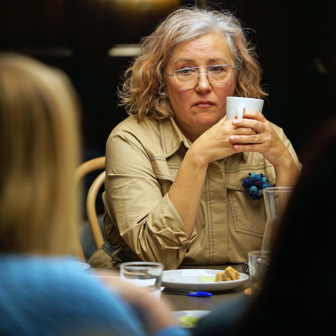During a conversation at the Aspen Institute back in 2015, Netflix chief content officer Ted Sarandos was asked about his projections for the coming decade. The streaming giant was riding high on Wall Street: its stock price more than doubled that year, and subscriber numbers grew by seventeen million to almost seventy-five million worldwide. Everyone was talking about a Golden Age of Television.
Sarandos responded to the question with a mix of caution and confidence. The company was operating in a volatile and complex environment, he said, with ambitious competitors, rapidly developing technologies and changes in tastes and viewing habits. But Netflix had always prized skills in reinvention: “We’re the ultimate disruptor.”
Ratings and subscription income were not the driving forces at Netflix, Sarandos was at pains to emphasise. An obsession with ratings was destroying the quality of television by forcing program-makers to strive for instant success, when many landmark series only gained significant following over time, even well into the second season.
This isn’t the first time people have talked about a golden age. In the mid twentieth century, the postwar spread of household TV sets led to a burgeoning entertainment culture made and transmitted via commercial and public broadcasters. The latest golden age — defined by a quantum leap in the quality and sophistication of drama series — came when Netflix and other major players became both streaming platforms and production companies.
HBO, which launched its streaming service in 2010, had been producing ambitious dramatic series long before then, setting new standards with The Sopranos, premiered in 1999. Quick to identify an opportunity, movie companies had begun moving towards television, with Warner Brothers launching the first season of The West Wing in the same year.
At the heart of the renaissance, according to Sopranos showrunner Matthew Weiner, who went on to write the pilot for HBO’s Mad Men in 2007, was long-form storytelling. Like Sarandos, he stresses that “you cannot have the audience’s voice in your head, or you will be paralysed.” Sustained courage was required to maintain the inventive spirit over thirteen episodes. It was a new kind of marathon, “like a thirteen-hour movie.”
But perhaps a better comparison would be with the heyday of the Victorian novel, when writers like Charles Dickens and Anthony Trollope published their stories in instalments in magazines. Serialisation helped them explore how the lure of suspense could be made more potent by evoking complex, realistic social worlds and a multidimensional view of human behaviour.
In television, the freedom to work with a broad dramatic canvas was liberating not just for scriptwriters but also for actors, directors, editors, cinematographers and sound artists. American commentators tend to see The Sopranos (1999–2007) and The West Wing (1999–2006) as the breakthrough examples, but there were forerunners in Britain, where the BBC and Channel 4 had been producing exceptional dramatic series including Tinker Tailor Soldier Spy (1979), Edge of Darkness (1985) and the original House of Cards (1990).
One of the key factors in the US-led golden age was money. Liberal financial backing meant freedom to explore locations and use technologies in sound and image previously associated with cinema. The growing scale of the enterprise led to the emergence of the showrunner, a role akin to an orchestral conductor.
Whereas a director and executive producer make most of the decisions on a movie set, a thirteen-part series may involve several directors. With teams everywhere — in the writers’ room, the editing suite, the costume studio — the role of maintaining an overall creative vision is vital. The cast needs to work as an ensemble, and be selected accordingly.
An executive producer doesn’t traditionally oversee the editing process or become involved in the logistics of choosing locations. All these matters fall to the showrunner, whose main focus must be on creating a style, mood and narrative cohesion that keeps an audience hooked.
Perhaps the most remarkable example is the showrunning duo David Benioff and D.B. Weiss, who steered Game of Thrones through eight seasons and seventy-three episodes, attracting an audience that grew from two million to nearly ten million. While many claims are made for the defining series of the golden age, GOT achieved unrivalled dramatic ambition across every aspect of production. Mythic fantasy is not an easy genre to sell — beyond the cult following it initially attracts — but Benioff and Weiss left all genre expectations in the dust.
Drawing on the classics and Shakespeare, they dramatised George R.R. Martin’s story of warring states to evoke the Wars of the Roses and the great battles of the Trojan wars. They rose to the challenge of writing dialogue with the requisite grit and gravitas, and contracted linguist David J. Peterson to develop Martin’s fragments of Dothraki and High Valerian into expressive spoken languages.
Even extravagant fantasy worlds have their own forms of authenticity, and GOT set new benchmarks in craft and discipline across all areas of production. Great battle scenes didn’t just depend on the spectacle created with computer-generated imagery (though there was plenty of that) but also relied on human choreography, dramatic structure, and the most finely observed sonic and visual effects.
As the popularity imperative gave way across the industry to a fearless investment in sophisticated dramatic vision, audiences came to meet it. Global communities of taste were discovered by producers enterprising enough to source material in different languages and regions. The most successful of these ventures across language barriers has been a range of Scandinavian series, starting with Denmark’s The Killing (2007–12) and Borgen (2010–22), and Sweden’s The Bridge (2011–18).
Fusion productions followed, with cast and crew from Anglo and Nordic backgrounds working alongside each other, notably in Fortitude (2015). Nordic noir fed a growing appetite for tougher, darker stories, and demonstrated the potency of psychological realism. Tight ensemble casts brought stage rather than screen experience to their roles and didn’t conform to the demands of conventional photogenic casting.
All this helped to break the stranglehold of received wisdom in the industry, creating demand-driven production. As audiences grew and diversified, the challenge of courting viewers switched to that of keeping up with all those searching for the next binge-viewing experience.
While a plethora of generic crime and horror was always on offer, more innovative series demonstrated that darkness need not be equated with violence. In extended storylines, sinister philosophical and psychological dimensions are much more involving, especially when interwoven with wit and charm.
These were James Gandolfini’s secret weapons in the role of Tony Soprano, deployed so effectively he seduced viewers into becoming near-supporters of the mafia regime over which he presided… until the confronting brutality of it hit in the next scene of graphic atrocity. We may initially be drawn in to The Bridge by the mystery surrounding a grotesque murder, but what keeps us hooked is the paradoxical psychology of detective Saga Norén (Sofia Helin), whose obtuseness in interpersonal relationships plays out in a clinical moral absolutism that enables brutal decisions.
As literary epics have demonstrated over centuries, there is more narrative mileage in moral ambivalence than in any naive account of heroes and villains. Breaking Bad (2008–13) and its spin-off Better Call Saul (2015–22) created a massive cohort of addicted viewers for nuanced explorations of the moral nature of their central characters. Walter White (Bryan Cranston) and Jimmy McGill, alias Saul Goodman (Bob Odenkirk), present different but related versions of a contemporary Everyman figure.
If Walter has converted to a life in the criminal world, does this make him an essentially bad human being? Is Saul Goodman, despite his ever more ruthless conmanship, a good man? Put that way, the questions seem simplistic, but they become harder to answer with every twist in a marathon journey through dozens of episodes.
As a counterpart Everywoman, Phoebe Waller-Bridge created a new kind of alchemy in her genre-defying series Fleabag, playing disconcerting tone games across the registers of farce, melancholy, satire and pathos. Fleabag is easy to accuse of being self-obsessed and generally desperate, but when she directly addresses the camera she comes across like a twenty-first-century Tristram Shandy, narrator and witness to an imploding social world.
So where does all this brilliance leave us, as the golden age starts to do what all golden ages do and follow its own story arc in an irreversible decline? Netflix faces a revenue gap and falling stocks. With too many players in the market, viewers are reluctant to sign up to multiple services to get the programs they really want.
Brilliant series are still being made, but the proportion of run-of-the mill stuff is creeping up rapidly. Genre is back with a vengeance. A search on Stan or Netflix involves negotiating taxonomies at every step, including those algorithmically selected “for you.” Most of the abundance of series on offer are a stir-fry of hackneyed ingredients.
Enough of the noisy sex and amplified punch-ups. I swear I will not watch another series that is punctuated with jump scares, opens with a murder hunt in misty woods, features spies meeting on a park bench (have none of our security agencies cottoned on to that one yet?) or, worst of all, introduces a pet dog because killing a pet is the meanest thing bad guys can do. Could we have a Toto Award for the animal that makes it through to the end?
Many factors are contributing to the decline of this golden age, but primary among them may be excess consumption. It’s impossible to keep meeting demand at the highest levels of originality and quality. Something’s got to give. •




